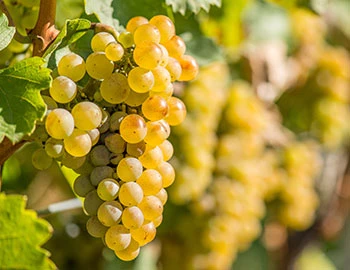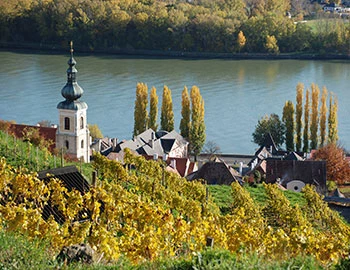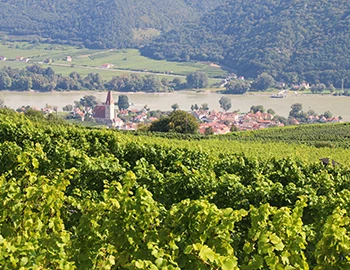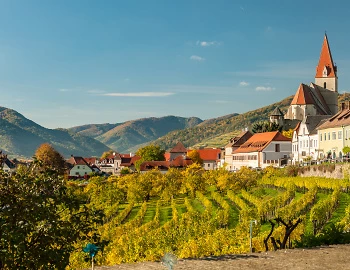Riesling Loibner Burgstall 2022
DAC Wachau, F.X. Pichler, 750 ml

| Grape variety: | Riesling |
| Producer: | F.X. Pichler |
| Origin: | Austria / Niederösterreich / Wachau |
Description
Tasting notes according to The Wine Advocate / Robert Parker / Stephan Reinhardt: "From sandy gneiss soil on a windy plateau, the 2021 Loibner Riesling Ried Burgstall fermented in stainless steel and aged in large oak for three months before being released in May. It opens with a clear, fine and elegant bouquet of lime juice and rind intermingled with riper citrus fruit such as grapefruit but also lovely grass and herbal notes. On the palate, this is a round but dry and savory, saline and astringent dry Riesling with lush and charming fruit on the mid-palate but a still lean and grippy finish. This is a wine that should be cellared for some years before drinking, but it can also age for many years.".
Attributes
| Origin: | Austria / Niederösterreich / Wachau |
| Grape variety: | Riesling |
| Label: | Vegan |
| Ripening potential: | 1 to 20 years |
| Drinking temperature: | 10 to 12 °C |
| Food Pairing: | Mild Asian dishes, Baked egli fillets with tartare sauce, Fresh water fish with cream sauce, Vitello tonnato, Salad with vegetables, pulses, pasta |
| Vinification: | fermentation in steel tank, soft pressing |
| Harvest: | in several rounds (tries) |
| Maturation: | in large wooden barrel/foudre |
| Bottling: | filtration |
| Volume: | 12.5 % |
| Note: | Contains sulphites |
Riesling
The cold-weather king
The Riesling is the flagship of the German wine industry. It grows from north to south in all growing areas. It is also comfortable in the neighbouring Alsace region and in Austria. Its specialty is being vinified to a variety of degrees of sweetness, from bone-dry wines to ice wine. Moreover, thanks to its spirited acidity, it ages better than many reds. The typical Riesling smells of citrus, peach and apricot, shows hints of flint, and with maturity develops an idiosyncratic petrol note. It reflects its terroir like hardly any other white variety. Thus, it often gets fuller and more aromatic in Austria than in Germany. In Alsace, in turn, it has a particular mineral taste. Riesling is a wonderful culinary companion. It fits well not only with fish and shellfish, but also takes the heaviness from hearty meals. And with a fine sweetness and acidity balance, it works wonders for Asian cuisine.

Wachau
Wachau: white crus of world renown
The Wachau is literally a spectacle for all the senses. The river landscape is extraordinarily beautiful, and its terraced vineyards were added to the inventory of UNESCO World Heritage Sites in 2000. The wines, too, are spectacularly good. Grüner Veltliner and Riesling are in friendly competition for being the most high-quality white wines in Austria. In their own way, each variety yields unique crus that combine power and finesse in playful lightness.

Niederösterreich
Lower Austria: crus near and far from the Danube
Austria's largest state is also its largest wine region. 46,000 hectares are planted with vines in Lower Austria. It is a heterogenic wine region, consisting of eight wine growing areas. While white varieties like Grüner Veltliner and Riesling dominate in the areas north and west of Vienna, red varieties set the tone in the south and in the southeast (Thermenregion and Carnuntum). The internationally famous white crus from Grüner Veltliner and Riesling develop in the picturesque Wachau and Kamptal.

Austria
Austria – Sumptuous culture, accessible to all
Austria is characterized by unbelievable topographical diversity. A flat steppe in the east, forests and hills in the Alpine regions, wetlands and Mediterranean landscapes in the south. This in addition to a rich tradition and even greater love. It’s no surprise that the Romans found joy on this patch of Earth and cultivated wine growing. Austrian wine is not abundant, but it is high quality.



